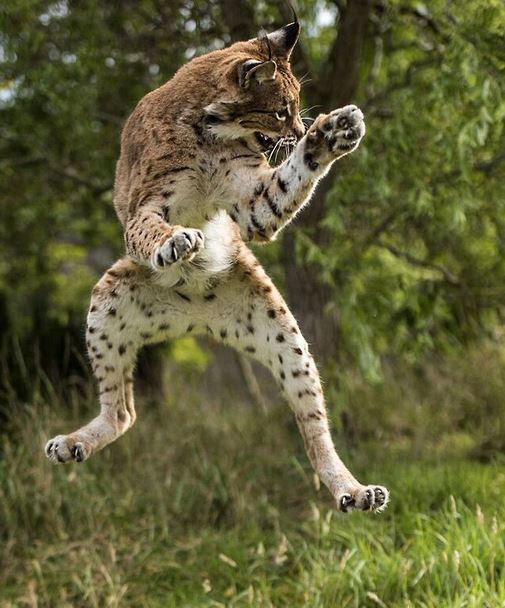The beautiful Eurasian wild lynx, which has been extinct in the UK for over 1,300 years, is now closer to making a comeback. Lynx UK Trust said its initial survey of public opinion regarding a reintroduction trial, which closed in March, received more than 9,000 responses.
The Trust says it will post its findings this month. According to Twitter mentions, overall public opinion has been more than 90% in favour..
The survey is the first stage in the Trust’s public consultation process, which will also include discussions and face-to-face meetings with members of the local community (where the lynx will be reintroduced) as well as other stakeholders.

The Eurasian Lynx could help control the UK’s deer population naturally. (Image: Lynx UK Trust)
The Trust is considering a forest in the North East as a new habitat for the wild lynx. It is holding a consultation into bringing the large felines to Aberdeenshire, Cumbria and Norfolk.
It is now also considering including Kielder Forest, in Northumberland, as it has a large deer population – the lynx’ preferred prey.
It has also called on Welsh landowners to submit applications for consideration.
The plan will be to introduce four to six lynx in each site. Each animal will wear GPS tracking collars so that the trust can monitor them.
As soon the Lynx UK Trust has completed analyzing the consultation, it will submit a formal application to Natural England and Scottish Natural Heritage, which are authorised to grant a licence. This could take many months.
The BBC quoted Dr. Paul O’Donoghue, a scientific specialist at the Lynx Trust UK, who said:
“These are beautiful cats which will fit beautifully into the UK environment. They’re extremely shy animals which have never attacked a human anywhere they live, and everywhere they live their preferred prey is deer which we have a serious overpopulation issue with in the UK.”

The Lynx has gestation period of between 67 and 74 days. The mother has from 1 to 4 kittens.
“Concerns raised by some sheep farmers at the plans have been met with assurances of a comprehensive and generous compensation program, and extensive research from Europe showing that lynx very rarely predate on sheep anywhere they live, preferring the hiding places of remote forestry to the open environment of farms or sheep moors.”
Dr. O’Donoghue has managed several international projects, including working with some of the rarest species in the world such as black rhinos and pygmy hippos. According to Chester University, he has made enormous progress in protecting the critically endangered Scottish Wildcat.
The animal to be brought back into the wild in the UK would be the Eurasian Lynx, Europe’s third largest predator after the brown bear and wolf. It is a medium-sized cat native to the forests of Europe, Siberia, Central and East Asia.

The Eurasian Lynx can leap over 6 feet straight up into the air.
The Eurasian Lynx has incredible powerful back legs and can jump 6.5 feet (2 metres) straight up into the air to strike at game bird.
Its large webbed and furred paws make it an excellent swimmer. Experts say it is not a threat to humans, given its shy and solitary nature. Unlike the fox, it does not roam into towns seeking food.
There are over one million wild deer in the UK, but no natural predator. According to Lynx UK Trust, the lynx could help control deer populations naturally.
Peter Watson, Executive Director of the Deer Initiative, said the reintroduction of lynx in Britain could help control deer populations ‘in a sustainable way’.
Some resistance from livestock farmers
Some livestock farmers are not so keen on the idea. They worry that their animals could be attacked, as well as gamebirds.
According to reports from Romania and Poland, where the Eurasian Lynx lives in the wild, attacks on farm animals are extremely rare.
Video – Reintroducing wild lynx to UK
